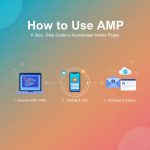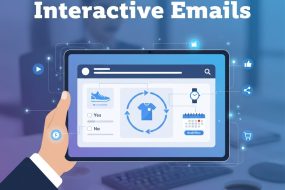
In today’s crowded inboxes, standard static emails often fail to capture subscribers’ attention. Interactive emails represent the next frontier in email marketing, blending real-time elements like AMP components, embedded surveys, and dynamic content to create engaging, conversion-driving experiences. This comprehensive guide will explore what interactive emails are, their benefits, how to implement them, and best practices to maximize impact.
What Are Interactive Emails?

Interactive emails go beyond static text and images. They allow recipients to take action directly within the email without clicking out to a landing page. Common interactive features include:
- AMP Components: Accelerated Mobile Pages (AMP) for email enable carousels, accordions, live forms, and dynamic data feeds.
- Embedded Surveys & Polls: Collect feedback in-line, increasing response rates by reducing friction.
- Image Carousels: Showcase multiple products or features in a single email slot.
- Accordion Menus: Organize long-form content so subscribers can expand sections they care about.
Why Interactive Emails Matter
Research shows that interactive elements can boost click-through rates by up to 300%. Here’s why they work:
- Instant Engagement: Recipients interact directly, creating a sense of involvement.
- Reduced Friction: Actions like form fills or surveys happen in email, eliminating extra steps.
- Personalization Opportunities: Dynamic data can tailor content on the fly based on user behavior or preferences.
- Better Analytics: You can track in-email interactions for richer behavioral insights.
Key Interactive Elements & Their Use Cases
AMP Components
AMP for email enables advanced functionality within major clients like Gmail & Yahoo. Typical AMP modules include:
- amp-carousel: Rotate product images or testimonials.
- amp-accordion: Organize product FAQs or step-by-step guides.
- amp-form: Let users submit RSVPs, surveys, or subscription updates in-line.
Surveys & Polls
Embedded surveys let you gather customer feedback on preferences, satisfaction, or product ideas without redirecting them. Quick poll questions with radio buttons or star ratings yield high completion rates.
Image Carousels
Carousels maximize limited email real estate by cycling through multiple promotions or product categories, driving interaction and clicks for top items.
How to Implement AMP Emails
Getting started with AMP for email involves several steps:
- Choose a Compatible ESP: Platforms like Mailchimp, SparkPost, and Braze support AMP modules.
- Set Up Developer Whitelist: Google requires senders to register and get permission to send AMP emails.
- Validate Your HTML: Use the AMP validator to ensure syntax compliance.
- Fallback Content: Provide plain HTML alternatives for clients that don’t support AMP.
- Test Extensively: Check rendering in Gmail, Yahoo Mail, and various mobile apps.
Best Practices for Interactive Email Design
- Keep It Load-Optimized: Limit CSS and image sizes to ensure fast load times.
- Guide the User: Use clear calls to action. Label buttons like “Vote Now” or “Browse Gallery.”
- Mobile-First: Ensure touch targets are large enough and UI components rearrange gracefully on small screens.
- Accessibility: Provide alt attributes for images and ensure contrast ratios meet WCAG guidelines.
- Single Focus: Avoid overcrowding the email with too many interactive widgets—prioritize 1–2 high-impact elements.
Top Tools & Platforms
Many ESPs and coding frameworks ease interactive email creation:
- Google AMP Playground: Sandbox environment to prototype AMP components.
- Mailchimp’s Interactive Campaigns: Built-in AMP templates and modules.
- Litmus Builder: Live code editing and testing for AMP and fallback HTML.
- Stripo: Drag-and-drop AMP components paired with static HTML fallback.
Measuring Interactive Email Success

Beyond open and click rates, track these metrics:
- In-Email Actions: Number of clicks on carousels, accordion expand events, or survey submissions.
- Time Spent: Duration recipients interact with your email elements.
- Conversion Lift: Compare conversion rates of interactive vs. static email segments.
Common Pitfalls & How to Avoid Them
- Overloading Features: Too many widgets can confuse users—focus on a single goal.
- Neglecting Fallbacks: Always include a functional HTML fallback for non-AMP clients.
- Ignoring Deliverability: AMP registration is critical; unregistered senders risk landing in spam.
Future Trends in Interactive Email Marketing
The horizon of email innovation includes:
- AI-Driven Personalization: Real-time content adjustments based on user behavior and preferences.
- Shopping Within Email: Full cart checkouts and product browsing without leaving the inbox.
- Web3 & Blockchain: Verifiable digital asset drops and secure identity verification inside emails.
Conclusion
Interactive emails are no longer a futuristic concept—they’re here and reshaping how brands engage users. By leveraging AMP components, embedded surveys, and dynamic content, marketers can drive higher engagement, deeper insights, and better conversions. Start small with one or two interactive features, rigorously test and measure performance, and expand your strategy as you gain confidence. The inbox of tomorrow belongs to those who dare to innovate today.


















No Comments